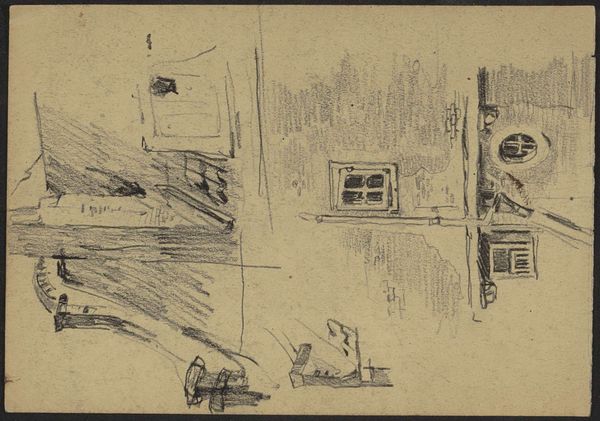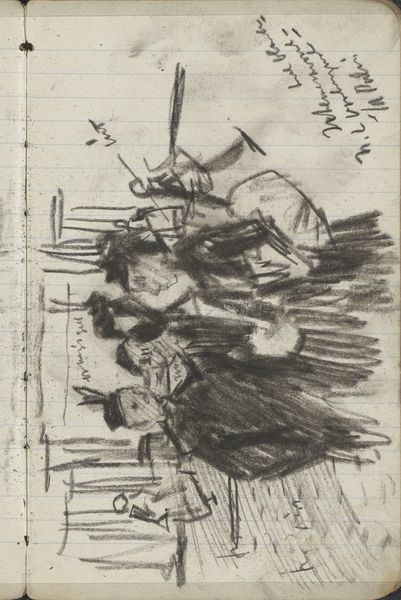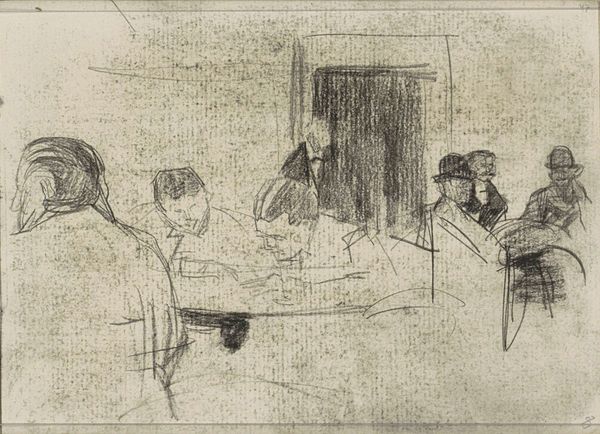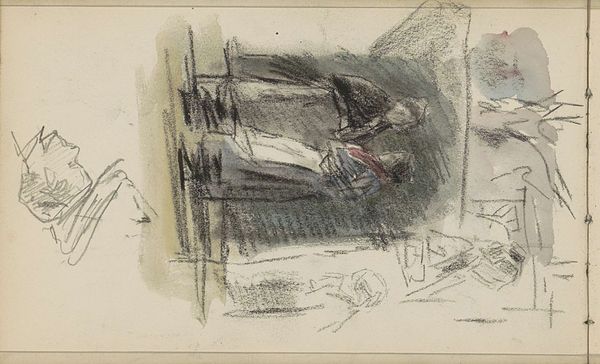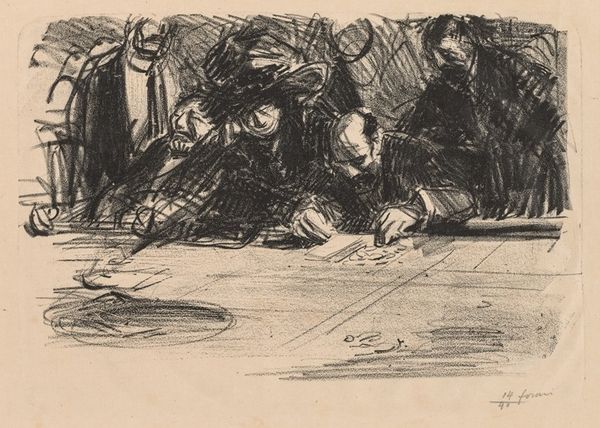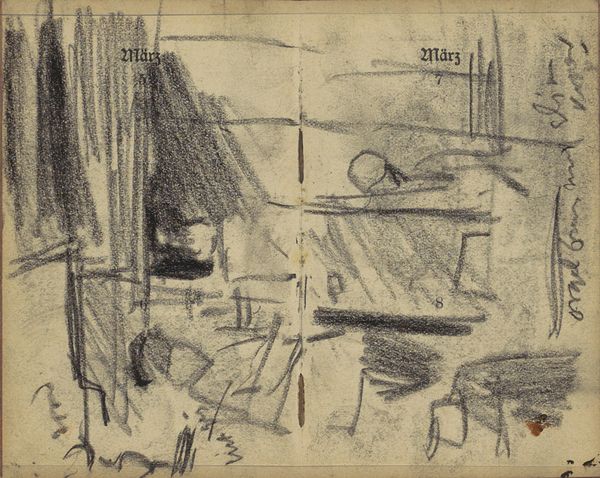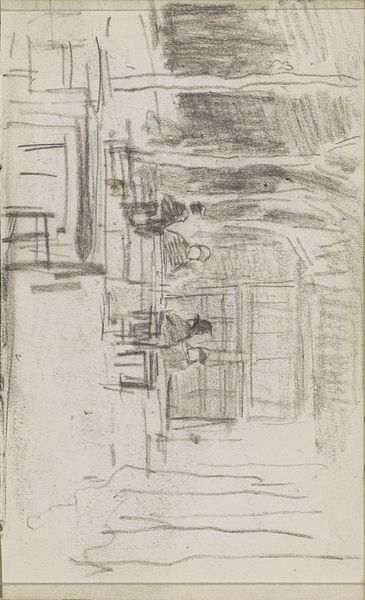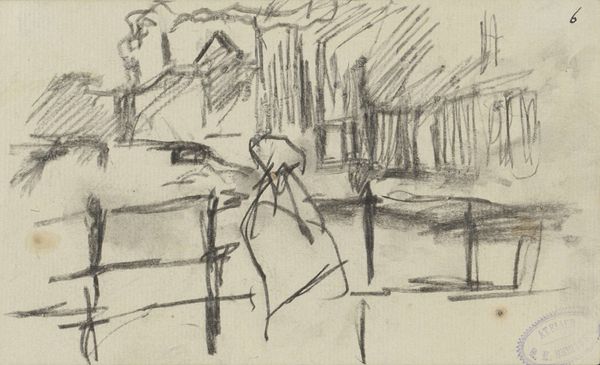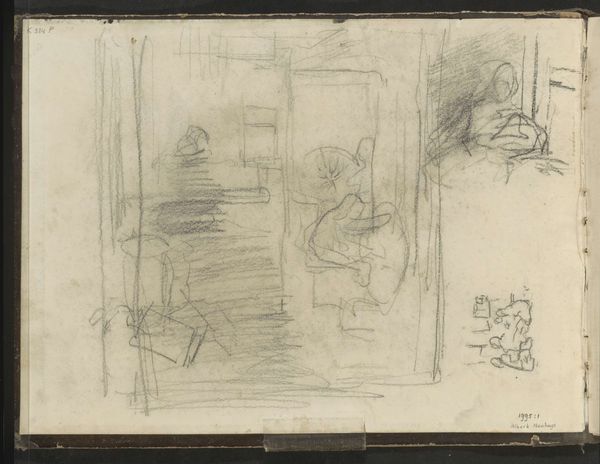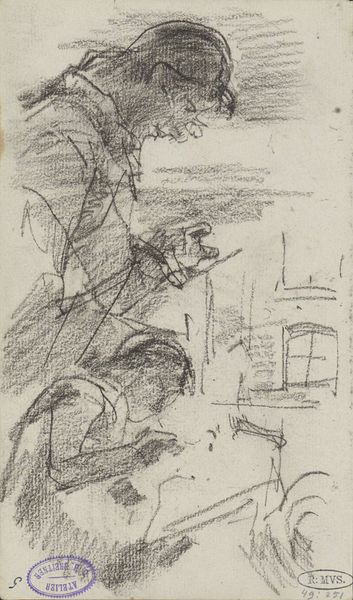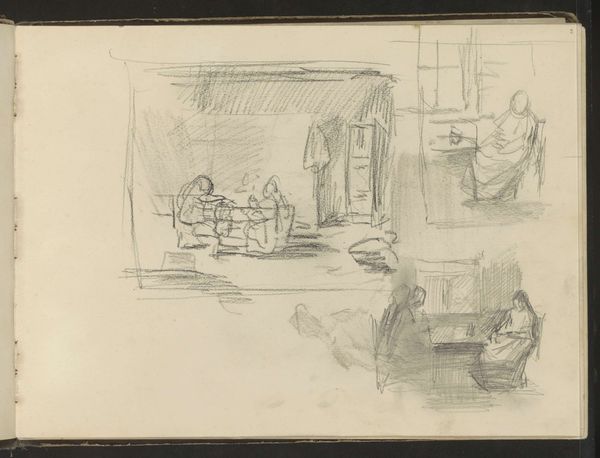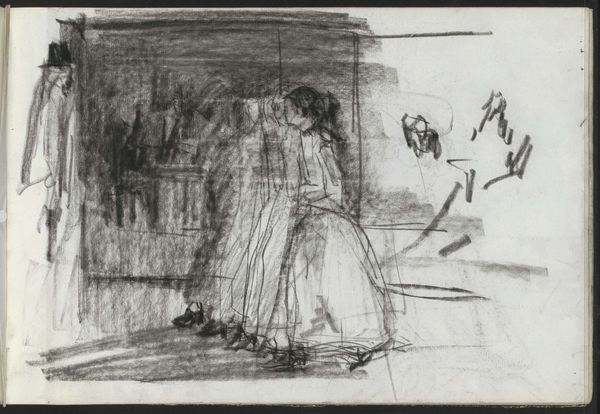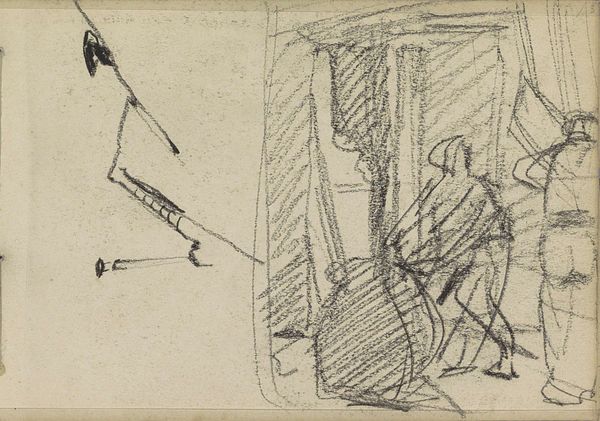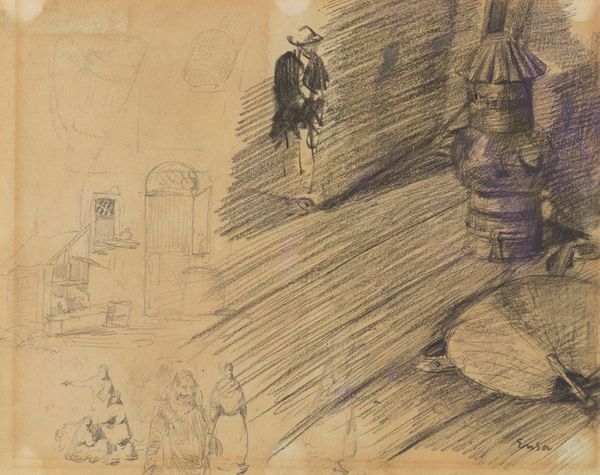
Copyright: Rijks Museum: Open Domain
Curator: Here we have Isaac Israels' "Straatgezicht met figuren," a street scene with figures, dating from around 1886 to 1903. Editor: It looks like a fleeting observation, capturing a bustling city moment with the barest of lines. You can almost feel the grittiness of the street surface. Curator: Exactly. It's rendered in pencil, demonstrating Israels' interest in documenting contemporary life, a common theme in Impressionist circles at the time. Street scenes provided endless material to study class dynamics and urban development. Editor: Pencil lends itself to that sense of immediacy. The sketch's hasty, almost anxious marks, emphasize the work involved. The marks across the street evoke the texture, dirt, the actual *stuff* of the city. What was the cost of a pencil back then for those walking the streets? Curator: Well, Israels himself came from a privileged background, his father a successful painter. His access to art materials was significantly different from the working-class individuals he depicts. His participation in the art world hinged on this access, a critical distinction when considering street art. Editor: Which forces us to ask about representation, right? Who has the means to depict whom, and to what end? Are we seeing honest engagement, or simply a form of aesthetic tourism funded through inherited capital? Curator: It's certainly a crucial question to consider. There are layers of filters inherent to its creation, determined by economics, societal roles, and prevailing notions of aesthetics and progress. It highlights issues of agency and artistic voice. Editor: I still appreciate how he’s captured a transient energy. The minimal execution conveys how raw materials are pushed, marked, and turned to create art out of observation. Even in the briefest of sketches, it’s a material testament to the artist's labor. Curator: Perhaps in considering both form and socio-economic circumstances, we gain deeper appreciation for this glimpse of a street bustling with anonymous figures, a fragment of the urban landscape, now preserved within the walls of a museum. Editor: It pushes me to contemplate all that’s required—visible and invisible—for these glimpses into the everyday to find a place in a cultural institution.
Comments
No comments
Be the first to comment and join the conversation on the ultimate creative platform.
